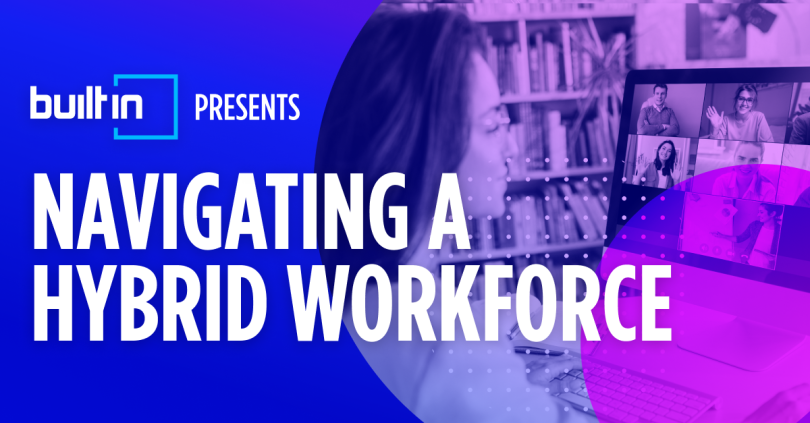During Built In’s August webinar, 78 percent of the audience, which largely consisted of people team leaders, said their companies have announced hybrid work models. Only 12 percent shared that they went fully remote, and 2 percent said they have returned to the office full time.
By comparison, in Built In’s recent report, The Great Return, zero percent of the employees who participated from companies across the tech industry expressed an interest in going to the office Monday through Friday.
“Flexibility is no longer a nice-to-have; it is the expectation,” said Alli Sitkiewicz, Built In’s VP of sales and account management.
“Flexibility is no longer a nice-to-have; it is the expectation.”
Still, for many leaders, the hybrid work model remains largely uncharted territory. How do you maintain culture and innovation with a widely distributed workforce? How does onboarding need to change, or compensation? Do performance metrics need to be adjusted?
In the webinar titled “Navigating a Hybrid Workforce,” Sitkiewicz spoke with Debbie Gunning, VP of people at Human Interest, and Kelsi Rohrmann, director of organizational effectiveness at Upwork, to address these questions and more.
“You’re not going to leave this webinar with a manual, but you will learn some best practices,” Sitkiewicz said.
Below are some takeaways, but the entire webinar was ripe with more information than we can include here. For the full experience, download the recording.
Nothing needs to be permanent
The decision employers make today does not need to be the approach they implement forever. Let that take some of the pressure off.
“We’re trying to be conscious of not over-committing ourselves to a strictly defined approach and instead allowing ourselves to be innovative and iterative by trying out different options,” said Rohrmann. “Our plan has to be sustainable and evolving. We will continue to rely on feedback from our teams about what’s working and what's not to make improvements.”
Employee safety above all
With new Covid-19 variants spreading, many employers have had to introduce extended mask mandates or walk back return-to-office plans. It can be frustrating and overwhelming for leaders to move on decisions, but Gunning encouraged HR and people teams to let employee safety lead the way.
“Keeping everyone as safe as possible and feeling as safe as possible have remained top of mind and informed a lot of our decisions,” Gunning said.
Identify work and communication styles of employees
In an office environment, it’s easier to pick up on people’s work and communication practices through direct observation and interaction. In a remote setting, identifying these for every employee has gotten significantly harder.
“Leaders need to roll up their sleeves and understand how each person works,” Gunning said. “Do they need to connect frequently or not? Do they want to work in solitude or collaborate with other team members?”
To gain an understanding, Gunning encouraged her team to start by asking every employee how they work best.
“Then you can create a personalized strategy for each person,” Gunning said. “There’s not a one-size-fits-all approach.”
On-Demand Webinar




